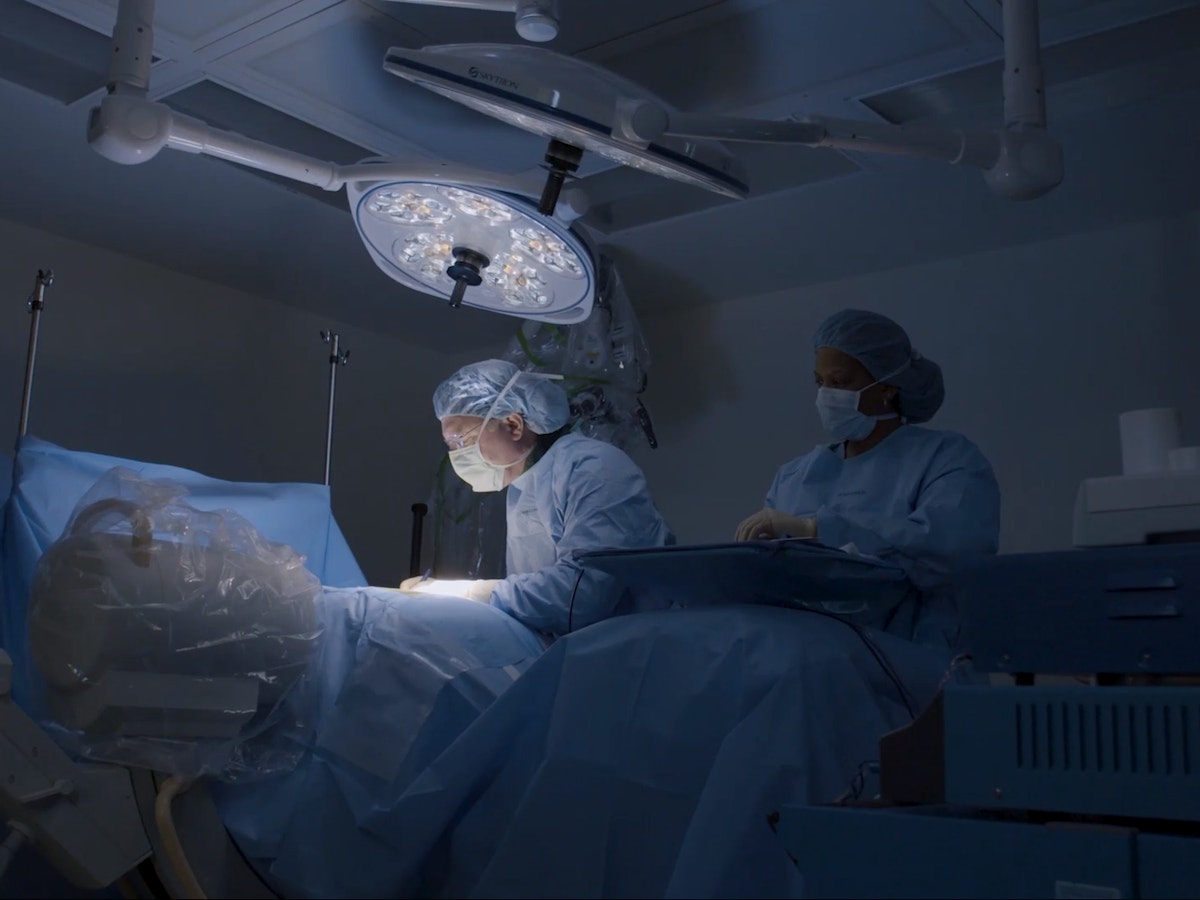Lower Back Fusion
Spinal fusion is a surgical procedure in which two or more vertebrae (the small, interlocking bones of the spine) are permanently joined into one solid bone with no space between them. It is designed to mimic the normal healing process of broken bones.

During spinal fusion, your surgeon places bone or a bonelike material within the space between two spinal vertebrae. Metal plates, screws, and rods may be used to hold the vertebrae together, so they can heal into one solid unit.
When the bone heals after fusion, there’s no longer any space between them. The motion between the two or three vertebrae is also eliminated.
Spinal fusion is done to improve stability, correct a deformity or reduce pain. Your doctor may recommend spinal fusion to treat:
- Deformities of the spine
- Spinal weakness or instability which may be occurring due to severe arthritis in the spine
- Herniated disc to stabilize the spine after removal of a damaged (herniated) disk
At Semmes Murphey, your doctor will discuss with you and perhaps try conservative, nonsurgical options for your condition. If you decide to proceed with spinal fusion, ask your surgeon what approach would be best for you.
Semmes Murphey surgeons are experts at performing spinal fusions using minimally invasive surgical techniques for optimal results.
Symptoms
Lower back fusion is performed to treat or relieve symptoms of many spinal problems. It’s useful for treating spinal disorders that make movement painful, such as:
- Tumors
- Spinal stenosis
- Herniated discs
- Degenerative disc disease
- Fractured vertebrae that may be making your spinal column unstable
- Scoliosis (curvature of the spine)
- Spinal weakness or instability due to severe arthritis, tumors, or infections
- Spondylolisthesis (a condition in which one vertebra slips onto the vertebra below it, causing severe pain)
Treatment
If you and your surgeon decide that lower back fusion is right for you, you will undergo various imaging studies of your spine. These detailed, high-resolution images will be used to plan and guide your surgery.
Semmes Murphey Clinic also uses an advanced robotic surgery system that offers enhanced preoperative planning and verification during surgery.
Surgeons perform spinal fusion while you're under general anesthesia so you're unconscious during the procedure. Surgeons have developed a variety of techniques for performing spinal fusion surgery. The technique your surgeon uses depends on the location of the vertebrae to be fused, the reason for the spinal fusion, and in some instances, your general health and body shape.
Generally, the procedure is done in three stages: incision, bone graft preparation and the fusion.
After the surgery, a hospital stay of two to three days is expected. Any pain and discomfort experienced can usually be controlled with medications.
After you go home, contact your doctor if you exhibit signs of infection, such as:
- Redness, tenderness or swelling
- Wound drainage
- Shaking chills
- Fever higher than 100.4 F (38 C)
It may take several months for the affected bones in your spine to heal and fuse together. Your doctor may recommend that you wear a brace for a time to keep your spine aligned correctly.
Physical therapy afterwards is very important and can teach you how to move, sit, stand and walk in a manner that keeps your spine properly aligned.
Your symptoms and comfort level will gradually improve as you gain strength and confidence in your movements. And while the procedure might not relieve all of your chronic back pain, you should have a general reduction in pain.
Even when spinal fusion provides symptom relief, it does not prevent you from developing more back pain in the future. Most of the degenerative conditions in the spine are caused by arthritis, and surgery will not cure your body of that disease.
However, since the procedure changes how the spine works by immobilizing one portion of it, the areas above and below the fusion are at an increased risk for wear and tear. They may become painful if they deteriorate and you may experience additional problems.
Being overweight, inactive, or in poor physical condition can also put you at risk for more spinal problems. Living a healthy lifestyle, with attention to diet and regular exercise, will help you achieve the best results.
This information was provided by the specialists at Semmes Murphey Clinic. Readers are encouraged to research trustworthy organizations for information. Please talk with your physician for websites and sources that will enhance your knowledge and understanding of this issue and its treatments.
The doctors at Semmes Murphey Clinic are leaders in minimally-invasive spine surgery, complex spine surgery, and spinal deformity cases.
Request an Appointment